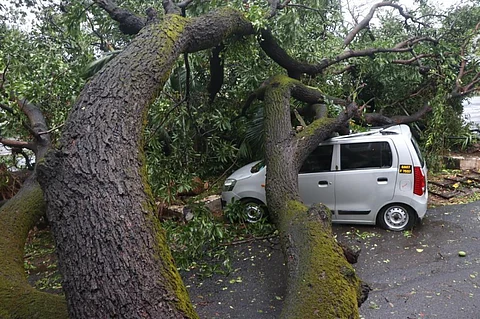

Odisha and the Andaman and Nicobar Islands were the most prepared among India’s states and Union territories (UTs) to reach the United Nations-mandated Sustainable Development Goal (SDG) on Climate Action, the SDG India Index & Dashboard 2020-21 has showed.
States and UTs were ranked on the basis of five national level indicators. These capture two out of the five SDG targets for 2030 outlined under the climate action SDG or Goal 13.
They also cover one SDG target each from Goals 3, 7 and 11 — Good Health and Well Being, Access to Energy and Sustainable Cities and Communities.
The scores for states ranged between 16 and 70 and between 18 and 77 for UTs.
Six states and three UTs bagged a position in the category of front runners (score range between 65 and 99, including both). However, 10 states and two UTs fell behind in the aspirants category (with Index scores less than 50).
The five national level indicators were:
Highlights of the Index
The index also found that 15 lives were lost in India due to extreme weather events in 2018-2019 per 10 million people. The total number of deaths due to extreme weather events in that year was 2,045.
Kerala lost 477 people, the highest in the country while Himachal Pradesh lost the second-highest number of lives at 343.
Maharashtra and Gujarat were the most prepared to deal with disasters, the index showed. On the other hand, Jharkhand was the least prepared.
The states were ranked on a scale of 0-50. Maharashtra had a score of 27.5, followed by Gujarat with 27. Jharkhand had the lowest score of 7.5.
As of 2020, 36.37 per cent of India’s total electricity generation was from renewable energy, the index showed. This included 90.4 gigawatt (GW) energy from renewable energy sources and 45.7 GW power generated from large hydropower projects.
Karnataka, Tamil Nadu and Maharashtra lead the country in the generation of power from renewable energy with production capacities of 18.9 GW, 17 GW and 13.2 GW, respectively.
At 2.5 GW, Jammu and Kashmir leads the UTs in the generation of renewable power. In terms of the share of renewable power as a proportion of the total electricity generated, Himachal Pradesh leads the country.
Some 94 per cent of the total electricity generated in Himachal Pradesh is from renewable sources, closely followed by Sikkim and Arunachal Pradesh at 84.8 per cent each.
Lakshadweep is the only state or UT that generates all its electricity from renewable sources. At 1.1 per cent share, Goa has the least share of renewable energy out of the total electricity consumed.
On an average, India saved around 38.6 MtCO2 or million tonnes carbon equivalent by December 2020 by switching to LED bulbs. Among the states, Odisha saved the highest amount of CO2 (5.5 MtCO2) followed by Gujarat (4.4 MtCO2) and Uttar Pradesh (2.8 MtCO2). Among the UTs, Delhi saved the most 1.4 (MtCO2).
The Disability Adjusted Life Years (DALY) rate attributable to air pollution (per 100,000 population) at the India level was 3,469, the index said.
The most affected state was Rajasthan with a DALY rate of 4,528, while the least affected state was Nagaland with a DALY rate of 1,408.
The SDG India Index & Dashboard 2020-21 was released by the NITI Aayog June 3, 2021.